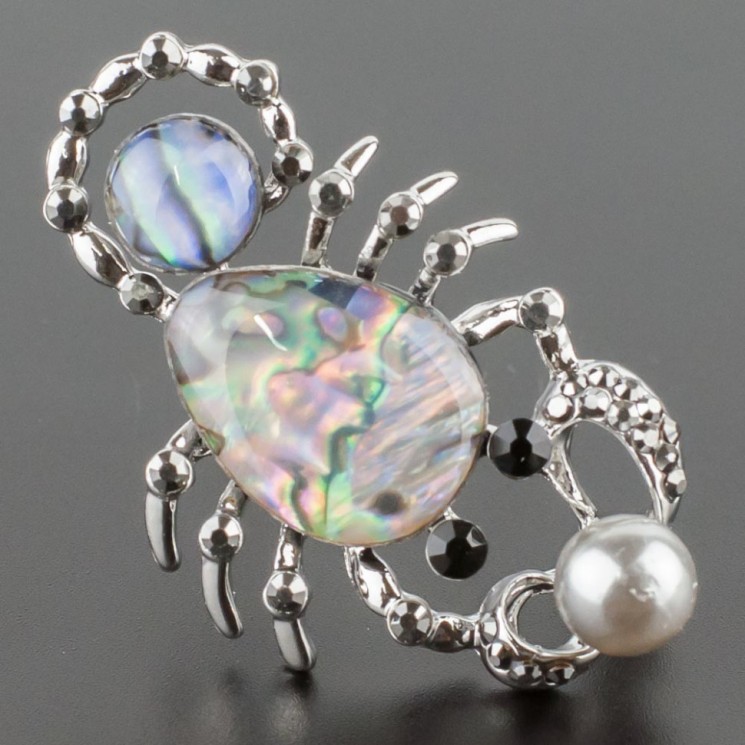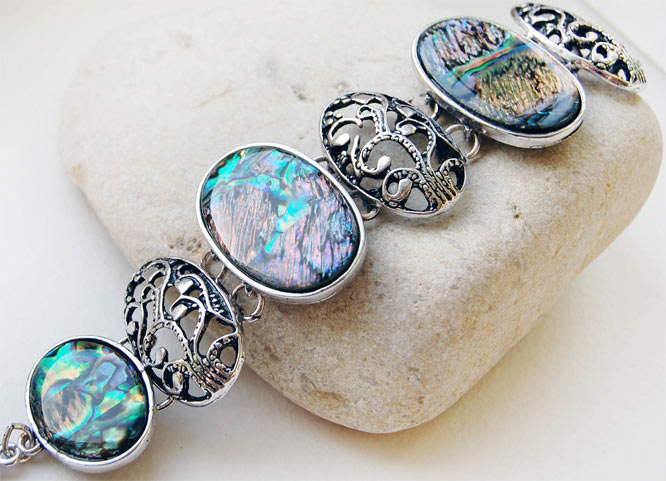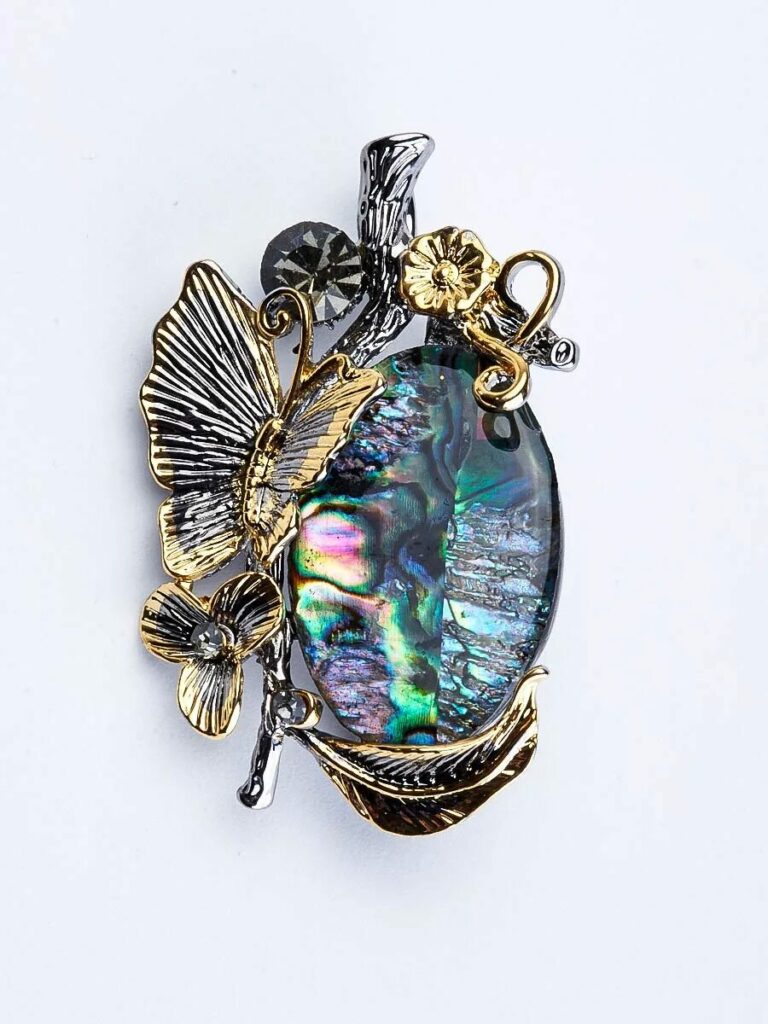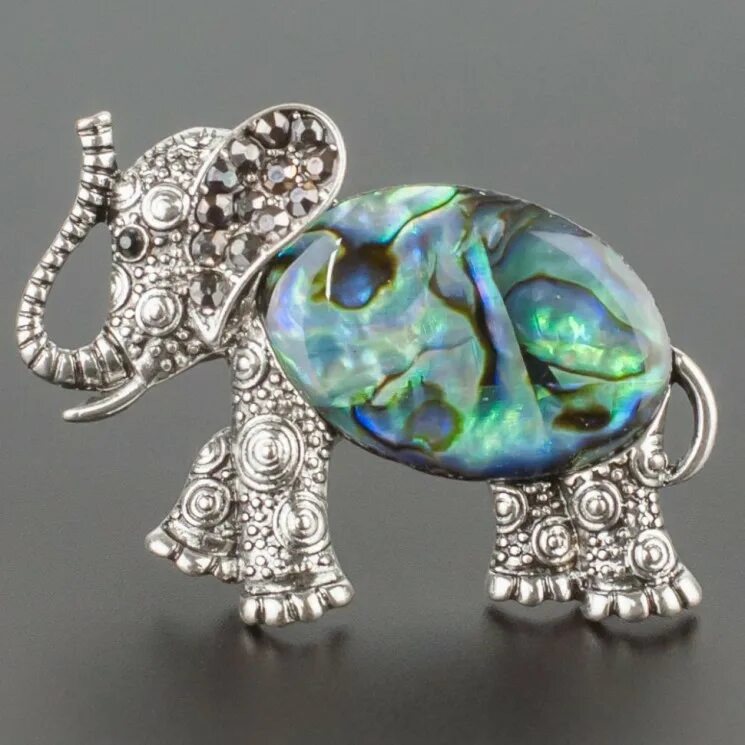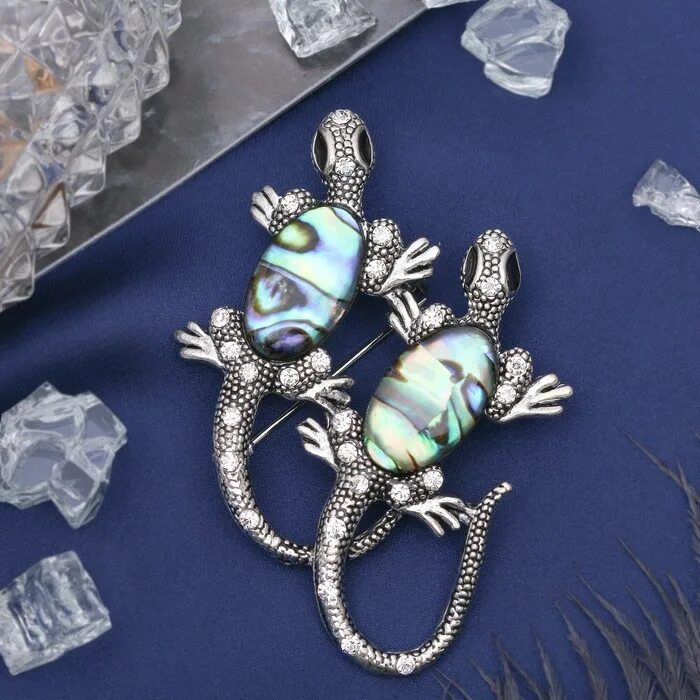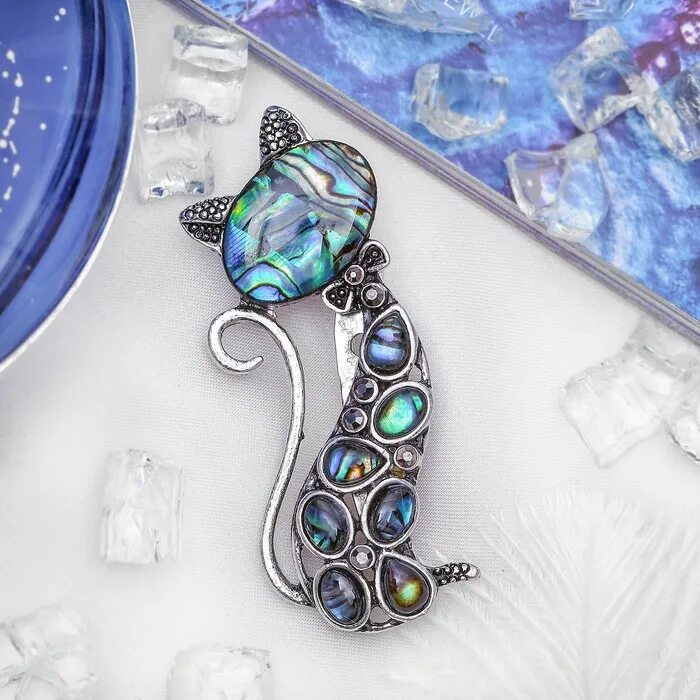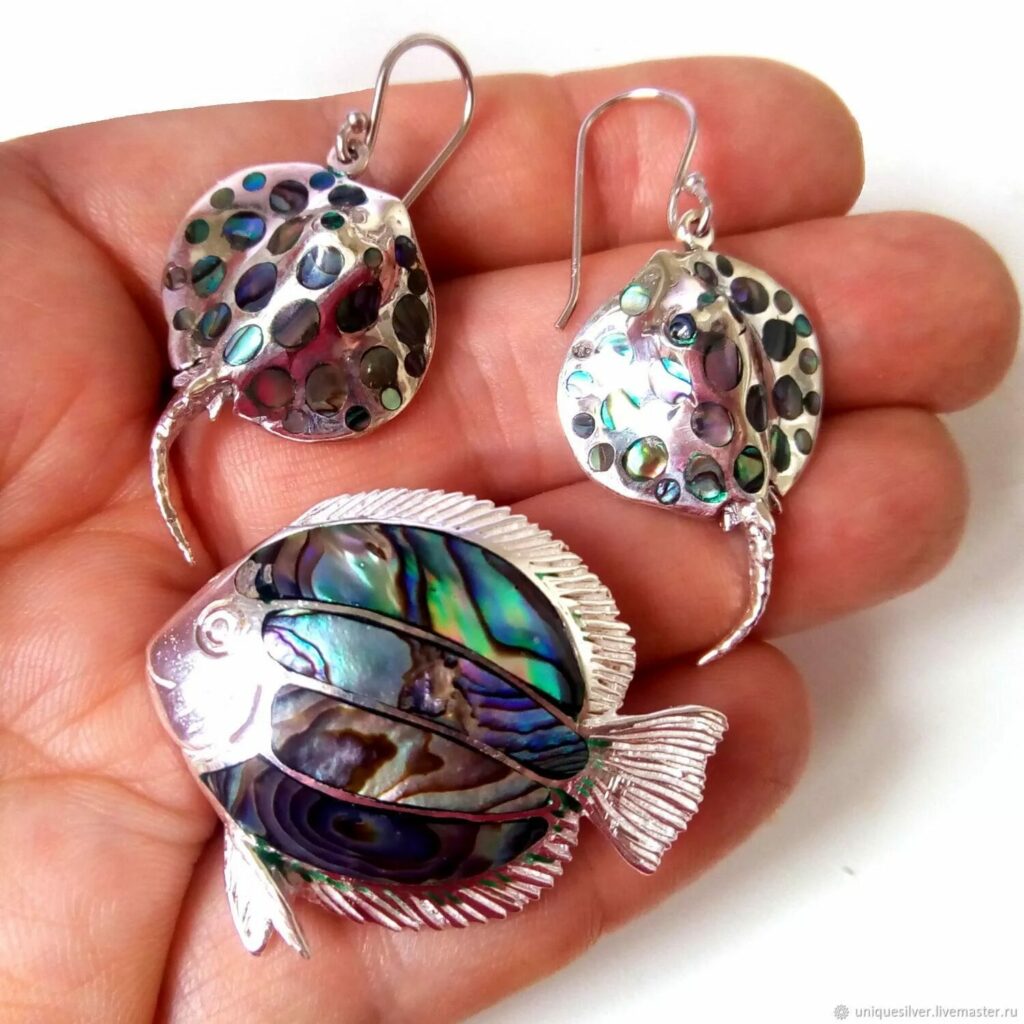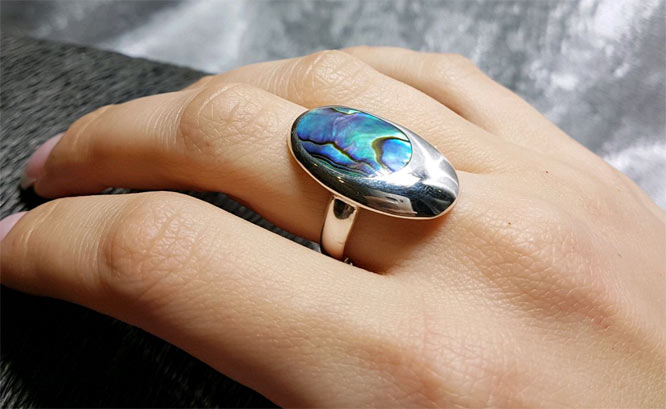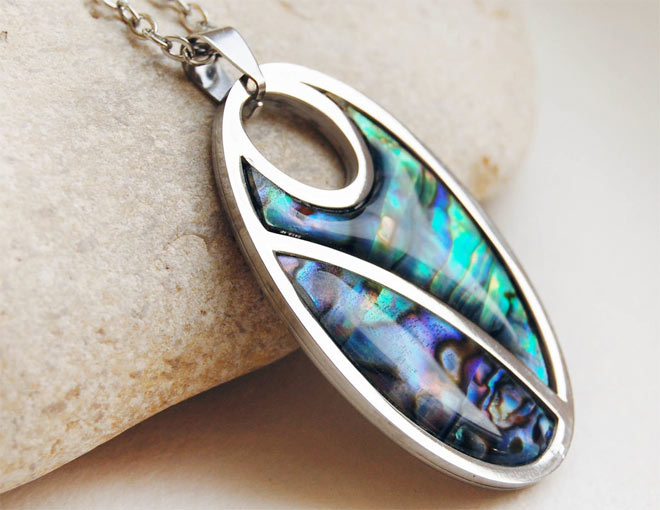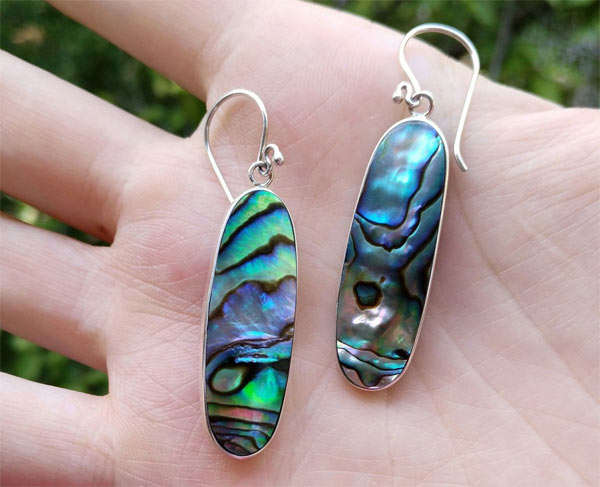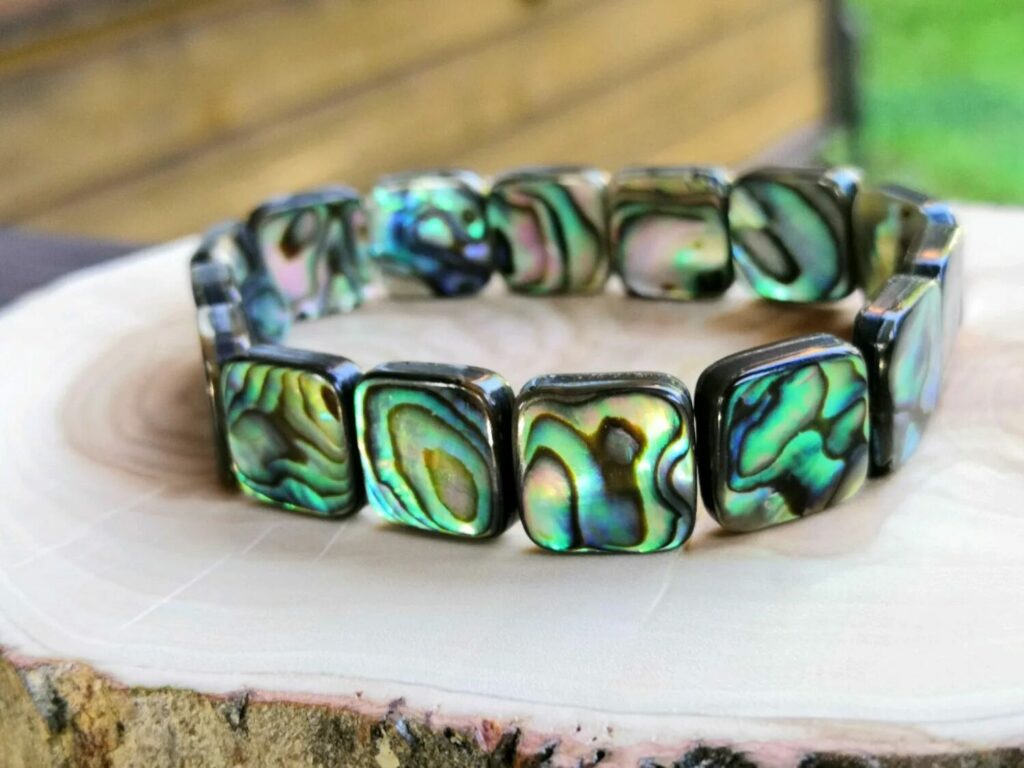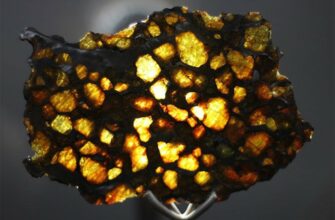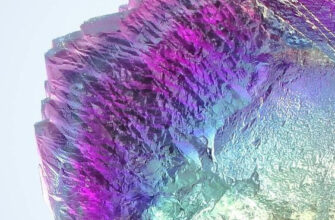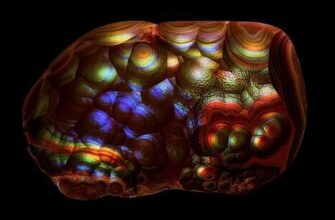Haliotis is a stone of organic origin, which is a shell of a gastropod mollusk of the Haliotidae family. These organisms act as "parents" of large sea pearls, and their shells are a wondrous rainbow creation of nature. For more than two thousand years in a row, people have been using the healing and magical properties of the mother-of-pearl gifts of the ocean.
History and origin
Haliotis is one of the varieties of mother-of-pearl. At first, the shells of these mollusks served as raw materials for the manufacture of dishes, tools, jewelry, and even served as a monetary unit. Later, mother-of-pearl powder became a dye, medicine, and also the basis for creating cosmetics and clothing. Weapon handles were made of stone - it was believed that such an element brings good luck in battle. In case of injury, abalone powder was applied to damaged areas of the skin, in order to avoid blood poisoning.
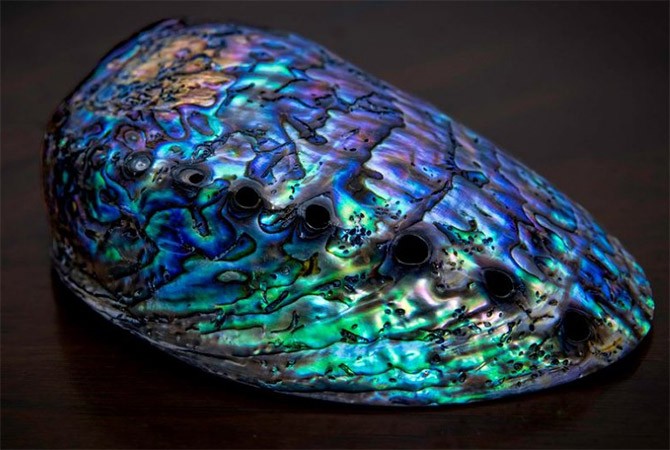
A little later, rainbow mother-of-pearl served secular ladies as a means for processing fans. This technique was used to protect women from all kinds of infections, since the haliotis has the ability to purify the air. And to prevent the appearance of dandruff or lice, hair ornaments were made from stone.
Since the 13th century, a period of popularity of sea shells began throughout Europe. Galiotis, along with other mollusks, was used as a material for inlaying many items - furniture, mirrors, knife handles and weapon stocks. Mother-of-pearl trimmed chess boards and playing pieces, caskets, boxes and even buttons. In the 18th century, mother-of-pearl snuff boxes became fashionable. The Renaissance was marked by the presence of sea shells in painting, sculpture, and architecture.
It is interesting! The many faces of the abalone once inspired the Russian artist M. A. Vrubel to paint a picture called "Pearl". The colors seem to come to life on paper, and before us appears a shell with unique iridescent tints, in the multi-colored bends of which sea nymphs are located. This work depicts the reunion of man with nature, where both worlds merge into one in the glare of multi-colored mother-of-pearl. The picture shows a haliotis, the outlines repeating the human ear, forcing us to hear the melody of the sea depths with the soul, and not with the body. The piece is dated 1904.

The versatility of abalone is also displayed in a large number of stone names. Multi-colored mother-of-pearl is called: abalone, haliotis, haliotis, Firebird feather, paua shell, or simply rainbow shell. Also, this stone is called "sea ear", since the mollusk haliotis differs from its relatives in a single-shell shell that repeats the shape of the human ear.
The animal, whose shell serves as the source of a popular ornamental stone, lives at a depth of about 30 meters. The muscular body of the mollusk is completely covered with a hard shell, with the exception of a small hole, from which a “leg” is visible, helping the body to move. With its body, the mollusk firmly sticks to the stones, so the miners have to tear it off with a knife.

Place of Birth
Haliotis is harvested in all warm oceanic and sea waters. The exception is the Arctic Ocean. The largest number of gastropod marine inhabitants is caught in the Pacific Ocean, off the coast of America and Australia. Mining is also done by:
- China.
- Japan.
- Philippine Islands.
- Mediterranean countries.
- Atlantic.
Abalones are also popular in eastern Africa, where the Indian Ocean is the birthplace of mollusks. The countries of Southeast Asia are also among the mother-of-pearl miners. Russian waters, alas, are too cold and fresh for heat-loving marine inhabitants. However, the northern inhabitants live off the coast of Moneron Island, which is 43 kilometers from the Russian island of Sakhalin.
physical properties
The shell of the haliotis is formed by elements such as carbonate of lime, protein, and also calcium carbonate. The length of the shell varies from 7 to 40 centimeters. The hardness of the abalone shell is the highest among its brethren. During the life cycle, haliotis produces about 130 pearls.
The hardness of sea mother-of-pearl is high: 5 - 6 points on the Mohs scale (for other pearls - no more than 4). Pearls, unique in pattern, grow in the shell, sometimes very large. The record weight is 469 carats.
Color spectrum
The uniqueness of agaliotis is that out of thousands of specimens, no two identical shells can be found. The color palette of abalone, combined with unusual patterns, resembles a kaleidoscope, where purple, blue, black, orange-red, emerald and crimson colors are intertwined. The play of shades is explained by the structure of the shell - there are no coloring pigments in the composition, but there are tiny plates that refract light. Between these plates are air spaces.
Mother-of-pearl, formed by other mollusks, usually does not dazzle with bright colors. His palette is cold play of shades of blue and pink. Haliotis differ from pure mother-of-pearl not only in the spectrum of colors. The shells of these mollusks are strong, but flexible. Due to the fragility of the connection of molecules, haliotis absorbs shocks in case of mechanical impact.
Medicinal properties
Galiotis absorbed all the healing possibilities of mother-of-pearl. And Western and Eastern cultures assign their own unique properties to abalone shells. It is believed that the gem copes with chronic diseases. For the treatment of diseases, powder from ahaliotis is used, as well as all kinds of products from these shells.

The use of agaliotis is versatile:
- People suffering from hearing loss are recommended to wear abalone earrings.
- In diseases of the respiratory tract, wearing a necklace or beads helps.
- To defeat pediculosis and dandruff, as well as to strengthen the hair, a comb of abalone can.
- Clam shell powder is used to rejuvenate the skin, eliminate age spots or freckles.
In ancient times, ground mother-of-pearl was used as an antiseptic for wounds. Also, haliotis was considered the main ingredient in longevity elixirs. Even modern inhabitants of the countries where these mollusks live add paua shell powder to food and drinks. It is believed that in this way the body is cleansed, immunity is strengthened, and the body retains youth and beauty longer. There is also an opinion that agaliotis dishes improve the quality of products.
Magical properties
A magical kaleidoscope of shades of abalone could not but attract the magicians of antiquity. And for more than two thousand years in a row, paua shells have been considered a magical item.
It is known that haliotis:
- attracts good luck;
- helps to draw attention to the owner of the gem, as well as to form mutual trust between people;
- repels pessimism and impure thoughts;
- serves as a family amulet, protecting the marriage from a split or adultery;
- develops intuition, mental abilities of a person;
- protects on a long journey.
Galiotis has a beneficial effect on the "weather in the house." Since ancient times, any items with these shells are considered the best, kindest gift. Such a talisman extinguishes manifestations of negativity, maintaining harmonious relations between all family members.
Jewelry with mineral
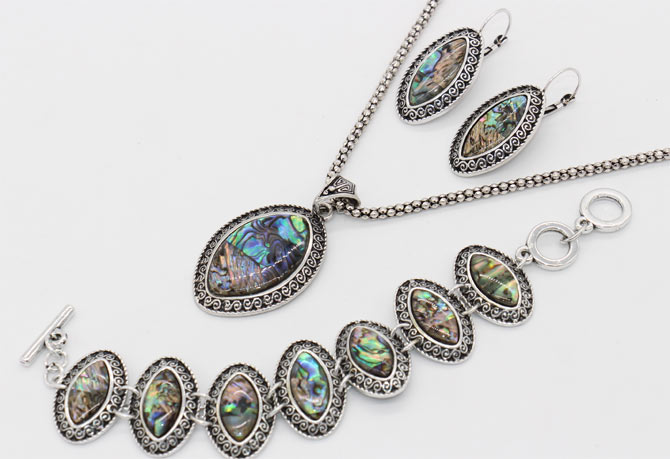
The assortment of jewelry made of colorful mother-of-pearl shells is very large - pendants, rings, necklaces, bracelets, brooches. Abalone is set in silver, very rarely in gold. Jewelry made of cupronickel or tin is also popular. Prices for products are affordable, especially for jewelry:
- Brooches from 5 euros.
- Earrings from 10 euros.
- Beads, necklace - 20-30 euros.
Up to 25 euros, a set of "necklace + earrings" is estimated. Paua shells are also used to encrust all kinds of decor items, dishes, and accessories. In jewelry, bright mother-of-pearl is combined with minerals such as malachite, turquoise, jet, pearl or coral.
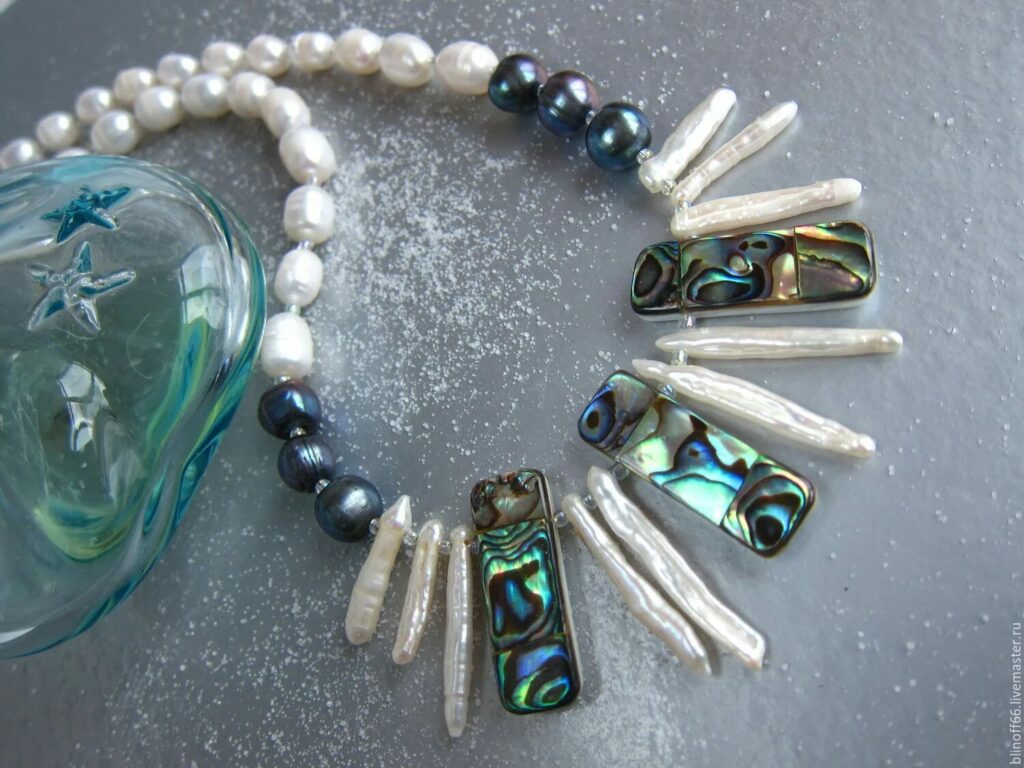
How to distinguish a fake
Despite the low cost of natural abalone, fakes still occur. Sometimes it is plastic coated with artificial mother-of-pearl or the same plastic, but dyed with dyes at the cooking stage. A few signs will help you recognize a real abalone shell:
- The uniqueness of the drawing. When buying jewelry with several inserts or beads, pay attention to the pattern. Natural shells are different, each of which is not like the other. Fakes often impersonate an identical pattern on all inserts.
- Sound. A natural shell, when tapped on a wooden surface, sounds loudly, while plastic sounds muffled. In addition, the mother-of-pearl coating of plastic is erased at the same time.
- View from the "inside out". The plastic imitation is equally good from all sides, while the natural clam shell on the back is dull and matte.
In addition, only a real haliotis will pass the test for mechanical impacts - the shell will withstand a blow or a test with a sharp object. In this case, plastic or glass will break or crack, and the coating will be erased.
Use and care
When buying an abalone jewelry, you should listen to your inner voice - an invisible contact should be established with this miracle of nature. Pay attention to the frame - vintage or excessive pretentiousness is not suitable for a naturally bright haliotis. The same rule applies to wardrobe items. Best of all, monochromatic clothes of soothing colors are combined with agaliotis.
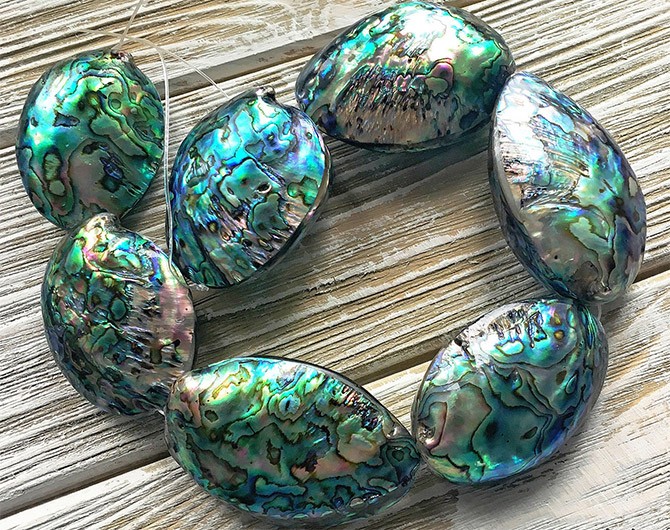
Despite the high strength, relative to other types of mother-of-pearl, a simple but gentle care is necessary for agaliotis:
- Avoid contact of mother-of-pearl with cosmetics, otherwise the shell will lose its natural charm.
- Protect products from mechanical damage.
- Store your jewelry individually, preferably in a fabric wrapper.
- For cleaning, use only warm water and a soft cloth, no chemicals.
The most important rule for the safety of abalone is regular wearing. This gem is a gift from the ocean depths, so it needs moisture. The more often the haliotis contacts the human body, the more moisture it draws from this contact. If decor items are made from colorful shells, then these things must be regularly sprayed with water.
Astrological Compatibility
Astrologers are unanimous in their opinion that galiotis is a universal patron. Each of the signs of the Zodiac will feel the energy of the deep sea. However, for some constellations, this mother-of-pearl will become native.
("+++" - the stone fits perfectly, "+" - can be worn, "-" - absolutely contraindicated):
| Zodiac sign | Compatibility |
|---|---|
| Aries | + |
| Taurus | + |
| Gemini | + |
| Cancer | + |
| a lion | + |
| Virgo | + |
| Scales | + |
| Scorpio | + |
| Sagittarius | + |
| Capricorn | + |
| Aquarius | + + + |
| Pisces | + + + |
- Fish. For representatives of this star family, abalone is a source of energy and optimism. The talisman will not allow Pisces to commit rash acts.
- Aquarius. A multi-colored amulet will give this sign self-confidence, thanks to which Aquarius will fly up the career ladder.

Astrologers recommend paua shell amulets to creative individuals, as well as people involved in charity work. Regardless of astrological affiliation, abalone products will bring peace and happiness to every home. And any item with abalone will be an excellent gift for young spouses, as a guarantee of a long and happy family life.
Interesting Facts
Archaeologists have found ancient traces of the use of abalone. Native American necklaces were decorated with pendants made from these shells. These finds date back to the era preceding the discovery of America by Christopher Columbus. In addition, the Indians used abalone shells as a container for making mixtures of herbs.
Most species of molluscs galiotis are listed in the Red Book, as they are on the verge of extinction. These gastropods produce amazing pearls, one of which has become a legend with its own name - "Big Pink Pearl". This creation of nature weighs 469 carats. They found a curiosity in the shell of an inhabitant of California's Salt Point Reserve in 1990.
Galiotis is popular with masters of different directions. There are several examples of handmade watches from Angular Momentum in the world. This accessory is notable for its steel case, inside of which there is a dial made of haliotis shell. Diamonds play the role of indexes on the dial. The products are produced in Bern under the name "Abalone".
Photo of jewelry with haliotis stone
